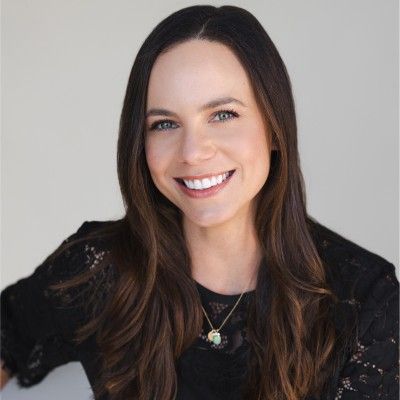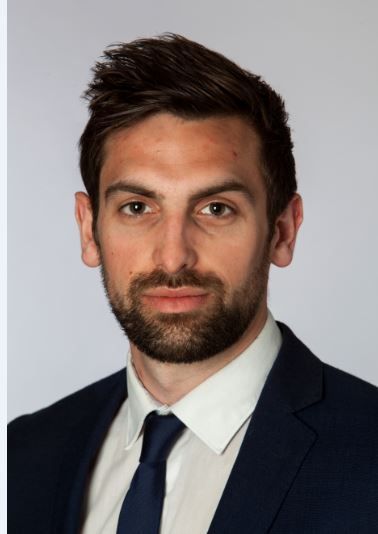Maximizing Impact Through Strategic Research Investments That Address Unmet Needs
Patient organizations should focus on how they can be the most effective by leveraging their strengths to uncover new research opportunities.
Patient organizations hold a unique position of influence, serving as drivers of change when it comes to advocating for the patient experience among regulators, those powering clinical developments, policymakers and leaders in the healthcare industry. Through a hands-on approach of investing in and leading initiatives, their primary objective is to ensure the effective allocation of medical research funding and advocacy for the resources needed by their community. Nevertheless, accomplishing this goal proves challenging due to the competing priorities associated with research investment, patient services, fundraising and business development.
Alexandra Weiss Roeser

Consequently, patient organizations explore various strategies to achieve this goal while evolving with the industry. They contemplate several aspects when determining a strategy, such as the informed perspectives of patient organization leaders, the research landscape and identifying where they can make the biggest impact for patients' needs. This crucial decision-making process determines how precious resources are prioritized to align with the research environment and interests of their patient communities.
Understand unmet community needs
Harvey Jenner

The first step any organization needs to take before making an investment is to understand the unmet needs within their community. A comprehensive, unbiased assessment, looking outside of internal scientific advisors and industry sponsors is critical and will provide a clear picture into what exists for research and where there are gaps.
This can involve a number of different approaches, including interviews with key stakeholders and your patient community, literature reviews and data analysis.
By building off the current knowledge and a full understanding of the competition, organizations can focus resources where the biggest impact can be made. The value of patient insights combined with this analysis empowers organizations to guide the development of studies.
Focus on where skillsets can be most helpful
No organization is an expert in everything. Patient organizations should focus on how they can be the most effective by leveraging their strengths to uncover new research opportunities. This comes from understanding their competitive differentiators and knowing what they would be best suited to tackle. This is driven by their resources, capabilities, relationships and what initiatives will make the biggest impact to their communities. Note that this will change over time and it’s important to continue to evaluate as the organization develops, additional expertise is brought in house and as the disease or disorder landscape continues to advance.
Convene, collaborate and partner for results
A strength patient organizations’ have that other stakeholders don’t is their convening power and ability to bring together cross-functional, invested stakeholders in an unbiased setting to tackle disease or disorder challenges and gaps. Knowing this presents a natural strategic path for jointly tackling a problem by bringing together different perspectives, increasing share of voice around an issue, utilizing each other’s capabilities and tackling problems from different angles.
There are times when it makes sense for patient organizations to take on an issue themselves due to their available resources and strategic position, but for many organizations trying to tackle complex issues, the financial burden is not feasible on their own. In these cases, identifying strategic partnerships, including collaboration with related organizations or outside stakeholders that aim to address the same issues, provides the best path forward.
Unmet needs often overlap between pharmaceutical companies, providers and patient communities. Working together can often accelerate efforts in areas such as testing or disease awareness campaigns where the company has greater resources to make a larger impact. The goal is to tackle a problem without working in silos. Patient organizations are in the unique position of working across industry, regulators, patients and providers, making them the ideal convener around an initiative.
Build for success
Taking a stepwise approach
Patient organizations must be agile and nimble in how they opt to build out their initiatives and investments. It will allow easier shifts as details on new approaches surface. A successful strategy is to breakdown a complex project into smaller activities that provide agility and reduce associated risk, allowing continued learning and opt out opportunities. One example of how this worked was with the MPN Research Foundation (MPNRF).
Prioritizing in action: MPNRF
There are many prioritization factors organizations must consider when determining the right path to investment. One example of an organization successfully tackling this challenge through a stepwise approach is the MPN Research Foundation (MPNRF). MPNRF’s mission is to stimulate original research in pursuit of new treatments — and eventually a cure — for polycythemia vera, essential thrombocythemia and myelofibrosis, known collectively as myeloproliferative neoplasms (MPNs). These progressive and heterogenous blood cancers are making it increasingly critical to diagnose early and advance knowledge of disease characteristics through new research.
MPNRF recognized the need for a registry anchored by understanding disease progression and prognosis based on consistent insights over many years from patients, clinicians and industry leaders. Through interviews with over 50 clinicians, they noticed considerable variation in clinical practices and documentation standards across not only clinics but also physicians within the same clinic. Thus, MPNRF acknowledged the risk involved in building a large-scale registry if they did not have the ability to capture the necessary data.
An iterative, multi-step approach was designed to reduce the risk and learn at each step. MPNRF conducted a feasibility assessment prior to deciding to proceed with the broader registry. These steps included: 1) understanding the availability of key data elements needed in clinical records; and 2) understanding the needs of external stakeholders, to support the development of a “sustainable” registry that caters to multiple stakeholders and that can overcome the data capture issues that are discovered.
Investigate sustainability strategies
Many investments can offer broader benefits to external stakeholders than originally envisioned, for example a disease registry can provide valuable insight for life science companies for their drug development pathway. Identifying areas that can be leveraged with external stakeholders creates a revenue stream that can offset the running costs for an initiative, allowing organizations to run the program longer or build its scale. Additionally, this supports patient-centric development of research while eliminating the siloed efforts that cause burdens for patients and providers.
Shape the patient-centered future
Patient organizations possess immense potential as catalysts for positive change. This is evident in their unique ability to understand their community’s unmet needs, and through leveraging their strengths while focusing on their differentiators. Looking ahead, patient organizations must embrace forward-thinking strategies and use their convening power to foster collaboration among invested stakeholders. Success can be found when organizations build for success by taking a stepwise approach to embarking on new initiatives and cultivating strong bonds with all community stakeholders. It is not just aligning their organization’s goals with the evolving needs of patients but finding methods to expand the reach of their finite resources to have an enduring impact on the community.
Alexandra Weiss Roeser is a director of nonprofit strategy within the Healthcare Solutions team at IQVIA.
Harvey Jenner is a principal of IQVIA Healthcare Solutions who works with medical specialty societies and patient advocacy organizations.
Conversations With Perry and Friends
April 14th 2025Perry Cohen, Pharm.D., a longtime member of the Managed Healthcare Executive editorial advisory board, is host of the Conversations with Perry and Friends podcast. His guest this episode is John Baackes, the former CEO of L.A. Care Health Plan.
Listen
Breaking Down Health Plans, HSAs, AI With Paul Fronstin of EBRI
November 19th 2024Featured in this latest episode of Tuning In to the C-Suite podcast is Paul Fronstin, director of health benefits research at EBRI, who shed light on the evolving landscape of health benefits with editors of Managed Healthcare Executive.
Listen
Medicaid Expansion Linked To Timelier Lung Cancer Surgery and Access to High-Volume Hospitals
April 17th 2025New research shows that Medicaid expansion was linked to a 2.1% increase in timely lung cancer surgeries and a 2.8% rise in procedures at high-volume hospitals, highlighting how policy changes can impact cancer care access.
Read More